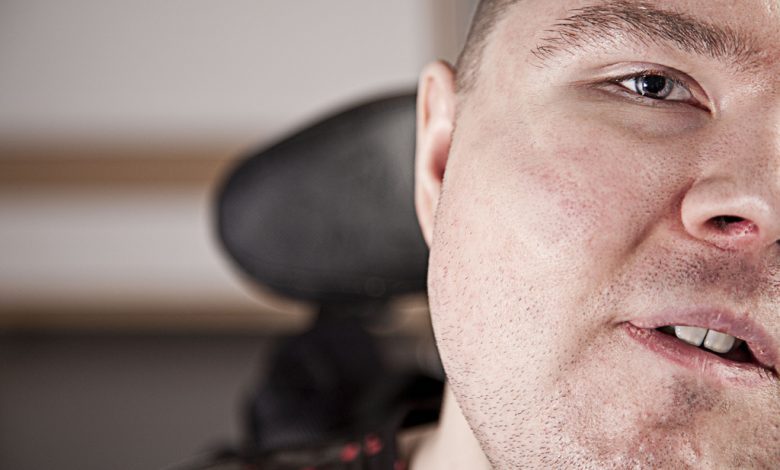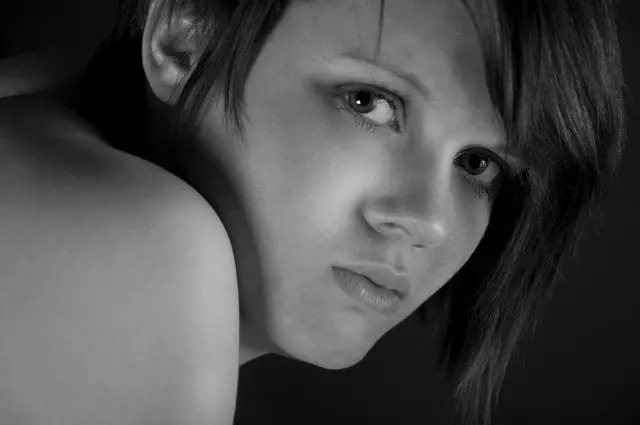
Disability photography: Changing the world one photograph at a time
New Disability Horizons contributor, Emily Alecock, is a photographer specialising in the positive promotion of disability. She tells us how she hopes her work will change people’s perceptions of disability.
Hi, I’m Emily, a photography student currently in my last year at University of Derby. I first decided to specialise in disability promotion when I started a large project in my first semester of year three. I was lacking inspiration and motivation in every way imaginable, so I decided that I needed to focus on something that I was passionate about in order to motivate myself. Having a younger brother with Duchenne Muscular Dystrophy, and having worked as a carer within the healthcare industry for several years, I was prompted to turn to the subject of disability.
Researching the subject, I quickly realised that the majority of photographs of disabled people are very negative, and mainly used within charitable organisations. Having lived within the disability world all my life, I already knew that societies’ opinion towards disability is very negative, and that has to change. I knew from that moment on, that this was something that disability was passionate about portraying in a positive light.
When I started the project, various professionals told me that this was not something that I would ever make any money out of or go very far with. Little did they realise that I am the type of person who, if you tell me I can’t do something, I will do it just to prove everyone wrong. I believe this is down to the inspiring positive attitude of my parents, and the way that they have brought up my three siblings and me. Our family motto has always been “no regrets” and I knew that I would regret not pursing through something that I love.
When it comes down to it, I am an ordinary hard-working woman that has been completely inspired by life experiences, and especially my brother. No matter what he is faced with, he picks himself up and carries on. This is the attitude I had to adopt to make this project possible.
My aim for this project is to get my work seen by as many people as possible, and to make them realise that I will not give up until I feel that I have made a difference to societies’ attitude towards disability. I will never be able to change everyone’s opinion, but if I can make just one person realise that disabled people have the same feelings and desires as everyone else then I can sleep at night knowing that I am getting through to someone. I really want to raise awareness of disability in general, and would hope to eventually have some work published on a larger scale. I just want to make sure that disabled people have a voice and are heard.
I recently did a project with Carl Tilson, who also has Duchenne Muscular Dystrophy. This was basically the taster for what was to come. I always knew that working with disability would be difficult, due to obvious restrictions. But I feel that having worked with someone with no mobility at all, I am prepared for anything that is thrown at me. Carl was an excellent participant and a very willing model, I feel truly honoured to have worked with him. It was extremely difficult to find disabled models, as a camera can be very daunting at the best of times.
I am currently working towards my degree show that goes up at the Markeaton Campus at the University of Derby on the 1st June. So, if you are interested, please feel free to come along. I am now working on expanding my project into the use of a documentary-style of photography, combined with the use of environmental portraiture. I feel that I can connect with an audience much more effectively when the subject is in their natural surroundings. I am also considering making this into something that will raise awareness of how a family deals with disability. Every family is different, and most parents are the main carers. I feel that people need to be made more aware of the positive and negative effects that living with a disability can have on a family.
I am hoping that I will eventually be able to make this into a career, but in the mean time, I am aiming towards a career in marketing and advertising within charitable organisations, with the view that I may be able to incorporate my photographic work into it. But before I get there, I have a lot more hard work to do.
Thank you for taking the time to read this. I hope you are as inspired and passionate about my work as I am. If you would like to work with me or would like more information then please do not hesitate to contact me via email.
By Emily Alecock
Why not show us your photographs by posting them on our Facebook wall or tweeting @DHorizons?



What a great article! I used to want to be a model before I became disabled, but was a couple of inches too short sadly. However, I recently became healthy enough to start getting photos taken again, and joined some of my friends last summer doing cosplay (basically glorified dressing up) and the guys from a photography company called Cosplay Fever were keen to keep my cane in the shots they took. It was so nice to get a positive view of disability in this light.
Here’s the photo in question (they’ve even kept it up on their website!) http://www.cosplayfever.com/gallery.php?e=0&m=11&y=2011
I like the fact that the disability was not the focus, just another feature of the model.
Anyway because of my background I want to say thanks for your great work, Emily. The modelling world is hard enough to get into as an able-bodied person, and so much harder with disabilities involved. I’m hoping you can really change that 🙂
Cheers,
Holly
sorry wrong link! here it is: http://www.cosplayfever.com/images/fever/2011/11/large/13.jpg
Hi Holly,
Thank you for your lovely response. This just keeps me going even more, and wanting to make a difference.
That image is really good, and god knows why you couldn’t make it as a model, you are beautiful.
It would be really good to perhaps work with you at some point?
I hope that I too can change people’s perceptions on disability, and make other a little less narrow minded and presumptuous. It is still a working progress as it has taken me best part of a year to get this far. But the hard work will continue.
If you want to talk more about this, please feel free to e-mail be on: emilyalecock@hotmail.co.uk
Thanks again,
Emily
Lovely work, Emily. You’ve tackled the subject matter beautifully. For more inspiration, not that you need any, check out Gary Radler’s work at http://www.garyradler.com/. He’s doing really marvelous work. He’s also very approachable if you want to enter into a dialogue with him.
All the best,
Nicola
Hi Emily,
I’m an actress and now a wheelchair user, as of 2009. I’m working really hard to continue building my image and ‘brand’, so to speak, but I haven’t found a photographer who really understands the artistic potential of the disabled form.
My headshots are covered but I really need various images that depict my range for my website and marketing materials. Could I chat with you about this?
I’d love to see more of your portfolio, what a fantastic stand you’ve taken in/for the disabled community!
All the best,
Melissa 🙂
Emily Hi,
Negative images of people with disabilities,, there is something here about what the organisations are trying achieve and sadly often giving a positive image of disability doesn’t help there cause. There was a recent article somewhere which said a disabled model had been used for the first time in a major national advertising campaign which says something when people think they can see disability and that it has to show in the photographs!
Shirley Britton is an interesting photographer, she has presented photographs to the RPS featuring disabled children, her work can currently be seen on the Photographers with Disabilities facebook group
http://www.facebook.com/groups/photographerswithdisabilities/
and more of her photography can be seen on their website
http://www.photographerswithdisabilities.com
Hope all goes well with the degree.
Chris Taylor
Meliisa Hi,
Wondering where you are based. If you are anywhere near to Bristol Shirley Britton is a photographer who may be able to help you. Drop me an email chris.taylor@photographerswithdisabilities.com
Chris
Melissa,
E-mail me on emilyalecock@hotmail.co.uk and we can discuss what you need and what we can arrange.
Thanks,
Emily